Your cart is currently empty!
Month: July 2024
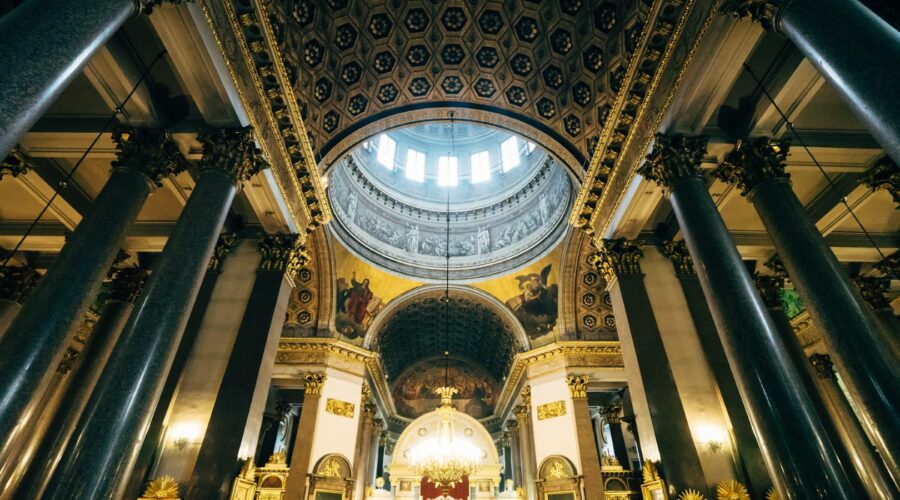
St Christopher’s Church: A Sanctuary in the Heart of Balham
Nestled amidst the vibrant streets of Balham, St Christopher’s Church stands as a beacon of faith and community. With its captivating history, stunning architecture, and diverse programs, the church offers a welcoming and inspiring space for all.
History: A Tapestry of Time
The story of St Christopher’s Church begins in the 19th century. As the industrial revolution transformed Balham into a thriving suburb, the need for a dedicated place of worship became evident. In 1860, the foundation stone was laid, and the church was consecrated in 1862.
Over the years, St Christopher’s has witnessed countless baptisms, weddings, and funerals. It has been a sanctuary during times of war and a beacon of hope during times of despair. In 1940, the church suffered extensive damage during an air raid, but it was quickly restored and reopened.
Architecture: A Symphony of Styles
St Christopher’s Church is a masterpiece of Victorian Gothic architecture. Its distinctive features include:
- Pointed Arches:
These graceful arches adorn the windows and doorways, creating a sense of height and grandeur.
- Stained Glass Windows:
Vibrant stained glass windows depict biblical scenes, adding color and light to the interior.
- Ribbed Vaulting:
The ceiling is adorned with intricate ribbed vaulting, supported by slender columns.
Community: A Place of Belonging
Beyond its historical and architectural significance, St Christopher’s Church plays a vital role in the Balham community. It offers a wide range of programs and activities for people of all ages:
- Services and Worship:
The church hosts regular Sunday services, as well as special services throughout the year.
- Children’s Activities:
Various programs and groups are available for children, fostering their spiritual and social development.
- Music Groups:
The church boasts a talented choir and other musical groups, enriching the worship experience.
- Community Events:
St Christopher’s hosts events such as concerts, exhibitions, and fundraisers, bringing the community together.
Worship: A Celebration of Faith
At the heart of St Christopher’s Church lies a deep commitment to worship. Sunday services offer a blend of traditional and contemporary elements:
- Music and Hymns:
Inspiring music, both traditional and modern, accompanies worship.
- Sermons:
Thoughtful and engaging sermons explore the Bible and its relevance to daily life.
- Communion:
The sacrament of Holy Communion is celebrated regularly, providing a time for reflection and unity.
Prayer and Spirituality
St Christopher’s Church offers a dedicated space for prayer and meditation. The Lady Chapel, located on the south side of the church, provides a tranquil environment for quiet reflection.
Additionally, the church offers guided meditation sessions and prayer groups, fostering a deeper connection with the divine.
Outreach and Mission
St Christopher’s Church is committed to reaching beyond its walls and serving the wider community. Its outreach programs include:
- Foodbank:
The church runs a foodbank, providing essential provisions to those in need.
- Refugee Support:
The church offers support to refugees, providing them with practical help and emotional guidance.
- Homeless Outreach:
St Christopher’s supports organizations that work with the homeless, offering food and shelter.
Visiting St Christopher’s Church
If you are looking for a spiritual home or simply want to appreciate the beauty of Victorian architecture, St Christopher’s Church welcomes you with open arms. Here are some details to plan your visit:
- Location:
St Christopher’s Church is located at 165 Trinity Road, London SW17 7HJ.
- Contact Information:
Phone: 020 8689 2385
- Accessibility:
The church is wheelchair accessible and provides a hearing loop system.
- Visitor Information:
Visitors are welcome to explore the church during open hours, attend services, or join any of the community events.
Conclusion
St Christopher’s Church is a vibrant and welcoming community in the heart of Balham. Its rich history, stunning architecture, and diverse programs make it a place of inspiration, connection, and spiritual growth. Whether you are a lifelong resident or a first-time visitor, St Christopher’s Church invites you to be part of its enduring legacy.
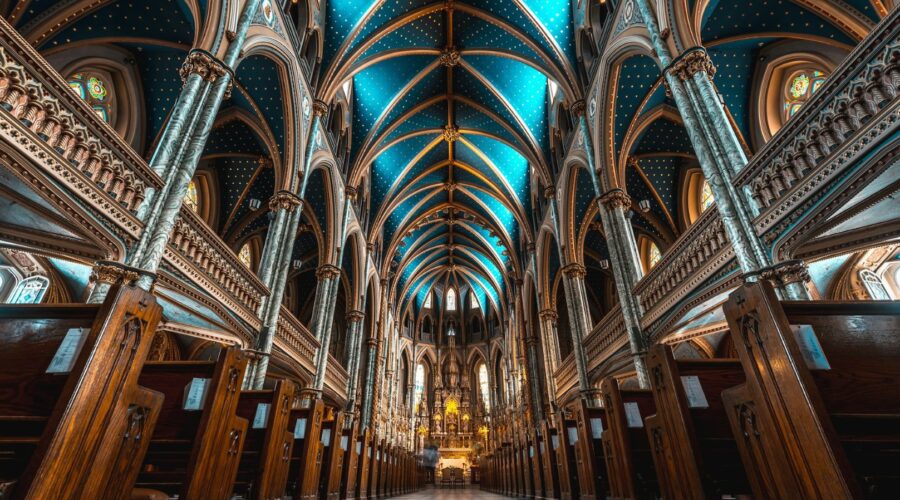
Discover the Rich History and Significance of St. Thomas the Apostle Catholic Church
A Journey Through Faith and Architectural Heritage
Nestled in the heart of a vibrant community, St. Thomas the Apostle Catholic Church stands as a testament to the enduring power of faith and the beauty of architectural artistry. Embark on a journey through its hallowed halls, discovering the compelling stories and profound significance that have shaped its legacy.
Origins and Architectural Evolution
The roots of St. Thomas the Apostle Catholic Church can be traced back to the late 19th century, when the area was experiencing rapid growth. In 1893, a small chapel was built to serve the growing Catholic population. As the community expanded, so too did the need for a larger and more permanent structure.
In 1912, the cornerstone was laid for the present-day church. Designed by renowned architect J.J. Egan, the building showcases a stunning blend of Romanesque Revival and Early Gothic styles. Its towering spires, arched windows, and intricate carvings reflect the grandeur and devotion of the era.
Interior Splendor and Spiritual Sanctuary
Stepping inside St. Thomas the Apostle Catholic Church is like entering a sanctuary of tranquility and awe-inspiring beauty. The spacious nave, adorned with arched ceilings and vibrant stained glass windows, invites contemplation and reflection.
The altar, the focal point of the church, is a masterpiece of craftsmanship. Intricately carved and adorned with gold leaf, it symbolizes the sacredness of the Eucharist and the presence of Christ within the community.
Community and Outreach
Beyond its architectural magnificence, St. Thomas the Apostle Catholic Church is a thriving spiritual center and a hub for community outreach. The parish offers a wide range of programs and services, including:
- Regular Mass and confession schedules
- Youth and adult faith formation
- Social justice programs
- Community outreach initiatives
Through its commitment to service and its unwavering faith, St. Thomas the Apostle Catholic Church has become an integral part of the local community, providing spiritual guidance, support, and a sense of belonging.
Historical Significance and Notable Events
St. Thomas the Apostle Catholic Church has witnessed and played a role in numerous historical events throughout the years. Among its notable moments:
- Hosting the first Mass in the area in 1893
- Serving as the venue for countless weddings, baptisms, and funerals
- Providing a safe haven during times of crisis, such as hurricanes and floods
The church has become a cherished landmark and a source of pride for the community, symbolizing its resilience and enduring spirit.
Conclusion
St. Thomas the Apostle Catholic Church is more than just a building; it is a living testament to the power of faith, the beauty of architecture, and the strength of community. Its rich history, architectural splendor, and unwavering dedication to serving the spiritual and social needs of its congregation make it a beacon of hope and inspiration for generations to come.
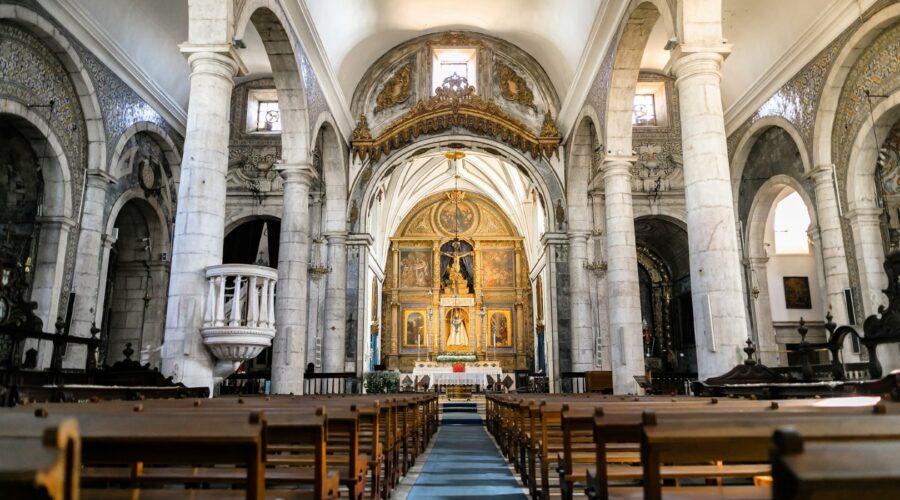
Deeper Christian Life Ministry (DCLM) Webcast: A Guide to Spiritual Growth
Are you seeking a deeper connection with God and a vibrant spiritual life? The Deeper Christian Life Ministry (DCLM) Webcast is an invaluable resource that provides a platform for spiritual nourishment, growth, and transformation. This comprehensive guide will delve into the key aspects of the DCLM Webcast, empowering you to maximize its benefits and embark on a journey of profound spiritual enrichment.
Understanding the DCLM Webcast
The DCLM Webcast is a live streaming service that broadcasts messages, teachings, and special events from the Deeper Christian Life Ministry. It offers a global reach, connecting individuals from all corners of the world with the ministry’s leadership and teachings.
Benefits of the DCLM Webcast
- Access to insightful messages from renowned ministers
- Opportunity to participate in live Q&A sessions
- Convenience of watching from anywhere with an internet connection
- Spiritual growth through exposure to sound biblical teachings
- Connection with a global community of believers
How to Utilize the DCLM Webcast
To fully benefit from the DCLM Webcast, follow these steps:
1. Visit the DCLM Website
Navigate to the “Webcast” section of the website.
2. Set Up Your Account
Create a free account to access the Webcast platform.
3. Choose a Stream
Select the desired stream based on language or location.
4. Join the Live Broadcast
Click on the “Join Now” button to access the live broadcast.
5. Participate Actively
Engage with the messages and ask questions during the live Q&A sessions.
Special Features of the DCLM Webcast
1. Bible Reading
Each Webcast typically begins with a group Bible reading, fostering spiritual growth and unity.
2. Praise and Worship
Uplifting praise and worship sessions create an atmosphere conducive to spiritual renewal.
3. Sermons
Renowned ministers deliver powerful and transformative sermons, providing deep insights into biblical truths.
4. Prayer Sessions
Dedicated prayer sessions facilitate spiritual growth and the development of a closer relationship with God.
Tips for Effective Use of the DCLM Webcast
- Set aside dedicated time for the Webcast to minimize distractions.
- Take notes during the sermons to enhance retention and reflection.
- Participate in the live Q&A sessions to clarify doubts and deepen understanding.
- Share the Webcast with others to spread the gospel and encourage spiritual growth.
- Utilize the Webcast as a tool for evangelism and outreach.
Conclusion
The Deeper Christian Life Ministry Webcast is an invaluable resource for spiritual growth, providing access to sound biblical teachings, live interactions, and a vibrant global community. By embracing the benefits and utilizing the features of the DCLM Webcast effectively, you can embark on a transformative spiritual journey that will deepen your connection with God and empower you to live a life of purpose and fulfillment.
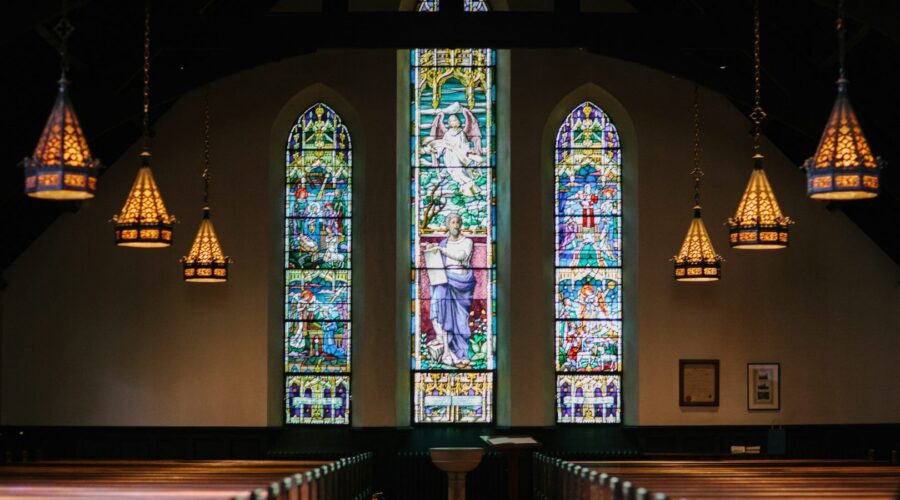
Discover the Splendid Grandeur of the Church of Our Saviour
Introduction
Nestled amidst the vibrant cityscape of Copenhagen, Denmark, the Church of Our Saviour (Frelser Kirke) stands as a towering testament to architectural ingenuity and spiritual grandeur. With its iconic copper-clad spire gracefully spiraling towards the heavens, it has become an enduring symbol of both architectural excellence and religious devotion.
A Journey Through Architectural History
Baroque Brilliance
Constructed in the latter half of the 17th century, the Church of Our Saviour embodies the exuberant spirit of the Baroque architectural movement. Its elaborate facade, adorned with intricate carvings and sculptures, reflects the period’s fascination with the theatrical and the ornamental.
The Spiral Spire
The church’s most striking feature is undoubtedly its helical steeple. Designed by renowned architect Lambert van Haven, the copper-clad spire comprises five interconnected spirals, gracefully ascending towards the sky. The spire serves not only as a decorative element but also as a functional staircase, allowing visitors to climb to the top for breathtaking panoramic views of Copenhagen.
Exploring the Interior
Step inside the Church of Our Saviour, and you’re greeted by an equally awe-inspiring spectacle. The lavishly decorated interior is a testament to the skill and artistry of the era.
The Altar and Pulpit
The elaborately carved altar, a centerpiece of the church, is adorned with intricate biblical scenes and figures. The pulpit, equally impressive, is a masterpiece of Baroque craftsmanship, featuring allegorical sculptures and intricate woodwork.
The Organ
Complementing the visual splendor is the renowned organ, built by renowned organ builder Johan Lorentz in 1698. With its 40 stops and 2,500 pipes, it is one of the largest organs in Scandinavia and continues to delight audiences with its magnificent sound.
Symbolism and Significance
Beyond its architectural beauty, the Church of Our Saviour carries profound symbolic and religious significance.
The Savior’s Influence
The church is dedicated to Jesus Christ, known as “Our Savior,” in accordance with the Lutheran tradition of the Danish Evangelical Church. Its design and ornamentation aim to evoke the grandeur and majesty of the Savior.
A Beacon of Hope
The spiraling spire, ascending towards the heavens, serves as a symbol of hope and connection to the divine. It represents the journey towards salvation and the aspiration of the congregation towards spiritual enlightenment.
Tips for Planning Your Visit
* Book your visit: Pre-book a guided tour to avoid lines and ensure access to the spire.
* Wear comfortable shoes: The spiral staircase to the spire requires some physical exertion.
* Check the website: Visit the church’s official website for up-to-date information on services, events, and admission fees.
* Explore the surroundings: Take time to explore the picturesque neighborhood, including the nearby Christiania Freetown and the Nyhavn waterfront.Frequently Asked Questions
Q: Can you climb the spire?
A: Yes, visitors can climb the 400-step spiral staircase to the top of the spire for panoramic views.Q: Is photography allowed inside the church?
A: Photography is generally allowed, but it’s advised to be respectful and refrain from using flash.Q: Are there guided tours available?
A: Yes, guided tours are available in multiple languages, offering insights into the church’s architecture and history.Conclusion
The Church of Our Saviour is a magnificent fusion of architectural prowess and spiritual reverence, standing as a beacon of Baroque splendor in the heart of Copenhagen. Whether you’re an architecture enthusiast, a devout believer, or simply seeking a place of awe-inspiring beauty, this iconic landmark is an unforgettable destination that will leave a lasting impression.
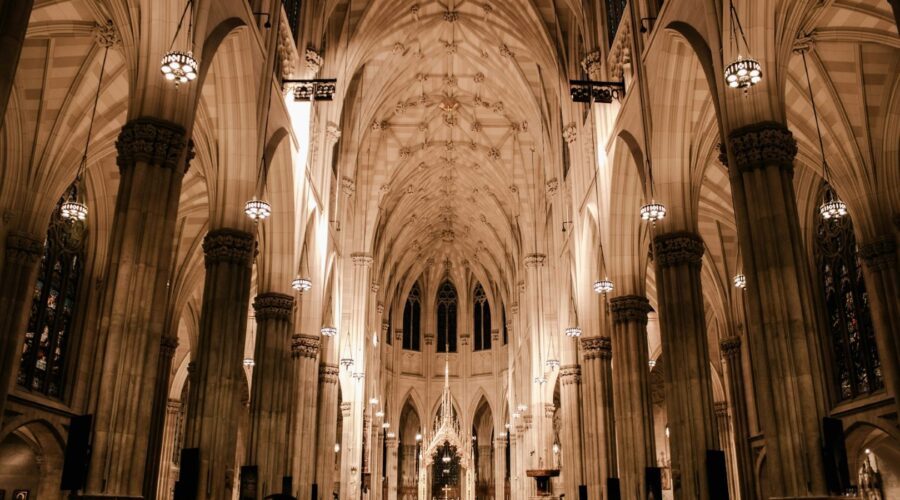
Iglesia Ni Cristo: Understanding Its History, Beliefs, and Controversies
Introduction: Unveiling Iglesia Ni Cristo
Established in 1914 in the Philippines, Iglesia Ni Cristo (INC) has grown into a global Christian denomination with millions of followers. This blog post delves into the history, core beliefs, and controversies surrounding Iglesia Ni Cristo, providing a comprehensive understanding of this captivating religious movement.
Historical Roots and the Founding Father
The Genesis of INC:
Iglesia Ni Cristo was founded by Felix Y. Manalo in 1914, who claimed to be the “Last Messenger” prophesied in the Bible. Manalo’s teachings drew inspiration from Seventh-day Adventist beliefs and emphasized a literal interpretation of the scriptures.
Early Growth and Expansion:
INC quickly established itself in the Philippines and steadily expanded its reach globally. Missionaries were sent overseas, and congregations were established in various countries, including the United States, Europe, and Asia.
Core Beliefs and Doctrines
The Trinity Doctrine:
INC rejects the Trinity doctrine and believes in only one true God, emphasizing the “Oneness” of God as the Father.
The Bible as the Sole Authority:
The Bible is considered as the sole source of religious truth, and its teachings are strictly adhered to by INC members.
Sabbath Observance:
INC observes the Sabbath on Saturday, in accordance with the biblical commandment.
The Last Messenger:
Felix Y. Manalo is revered as the “Last Messenger” and is believed to have restored the true church in the last days.
Organizational Structure:
INC is led by an Executive Minister, who is responsible for administering the church’s affairs. Local congregations are organized into districts and regions.
Controversies and Allegations
Financial Controversies:
INC has faced allegations of financial improprieties, including the misuse of members’ funds and tax evasion.
Human Rights Concerns:
There have been reports of human rights violations within INC, including the suppression of dissent and the control of members’ personal lives.
Political Involvement:
INC has been accused of intervening in politics and influencing election outcomes in the Philippines.
Critical Analysis and Conclusion
Strengths and Impact:
INC has provided a sense of community and purpose to millions of followers. It has promoted values such as discipline, morality, and charity.
Challenges and Criticism:
The church’s strict adherence to its doctrines and its centralized leadership structure have raised concerns about freedom of thought and individual expression.
Ongoing Scrutiny:
Iglesia Ni Cristo continues to face scrutiny and criticism, with ongoing investigations into its financial practices and human rights record. It remains a complex and controversial organization that has both admirers and detractors.
Additional Resources:
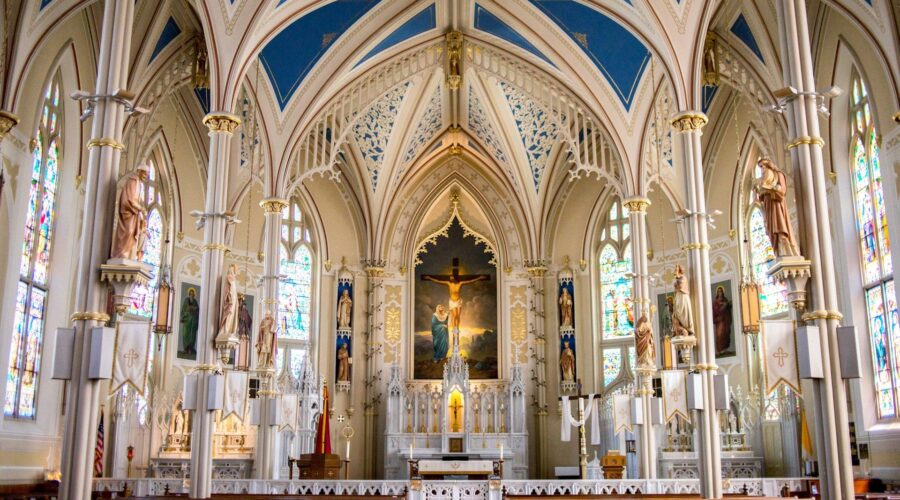
Grace Assembly of God: A Comprehensive Guide
About Grace Assembly of God
Grace Assembly of God is a Pentecostal Christian church with a rich history and a vibrant present. Founded in 1914, the church has grown from a small group of believers to a global movement with millions of members worldwide.
Mission and Values
Grace Assembly of God’s mission is to “reach the lost, disciple the found, and equip the saints for the work of the ministry.” The church values:
* Worship: Experiencing the presence of God through praise, music, and the preaching of the Word.
* Discipleship: Nurturing spiritual growth and equipping believers for Christian living.
* Missions: Spreading the Gospel locally, nationally, and internationally.
* Community: Building relationships and providing support within the church family.Beliefs and Practices
Core Beliefs
Grace Assembly of God adheres to the following core beliefs:
* The Bible: It is the inspired, infallible Word of God and the final authority for faith and practice.
* The Trinity: God exists as three distinct persons: Father, Son (Jesus Christ), and Holy Spirit.
* Jesus Christ: He is the Son of God, who came to earth to die for the sins of humanity and rose from the dead.
* Salvation: It is a free gift from God, received by faith in Jesus Christ.
* Holy Spirit: He is the third person of the Trinity, who indwells believers and empowers them for Christian living.Practices and Ordinances
* Baptism: Water baptism by immersion, symbolizing repentance and the cleansing from sin.
* Communion: Elements of bread and wine, representing the body and blood of Christ, are taken to remember his sacrifice.
* Prayer: Intercession and communication with God.
* Lay Ministry: Members of the congregation are called to serve in various ministries and leadership roles.Church Leadership and Structure
Senior Pastor
The senior pastor provides overall leadership and spiritual guidance to the church. They preach, teach, and oversee the church’s ministries and programs.
Elders
Elders are appointed by the senior pastor and serve as a council of advisors and decision-makers. They provide spiritual oversight, disciple members, and share in the leadership of the church.
Deacons
Deacons assist the senior pastor and elders in practical matters such as financial management, facility maintenance, and member care.
Members
Members are the foundation of the church and are encouraged to participate in worship, discipleship, and outreach. They have a voice in church matters through congregational meetings.
Ministries and Outreach
Ministries for All Ages
* Children’s Ministry: Age-appropriate programs for spiritual growth and development.
* Youth Ministry: Equipping teenagers for Christian living and discipleship.
* Young Adult Ministry: Supporting and connecting young adults as they navigate life after high school or college.
* Adult Ministries: Bible studies, fellowships, and support groups for adults of all ages.
* Senior Adult Ministry: Providing care, fellowship, and spiritual enrichment for older members.Outreach Programs
* Missions: Local, national, and international outreach to spread the Gospel and provide practical assistance.
* Community Service: Connecting with the local community through outreach programs, such as food banks and disaster relief.
* Evangelism: Sharing the message of Jesus Christ with non-believers through personal witnessing and public events.Prayer and Intercession
Prayer is a vital part of Grace Assembly of God. The church encourages members to develop their prayer lives and participates in corporate prayer gatherings. There is a dedicated prayer team that intercedes for the needs of the church and the world.
Tips for Worship and Engagement
* Attend regularly: Establish a consistent schedule for worship and discipleship.
* Come with expectancy: Believe that God will move and speak to you through worship and teaching.
* Engage in the service: Sing, pray, and participate in the various aspects of worship.
* Connect with others: Build relationships with fellow members and participate in social activities.
* Serve in a ministry: Use your gifts and talents to contribute to the church’s mission.
* Study the Bible: Engage in personal and group Bible study to deepen your understanding of God’s Word.Conclusion
Grace Assembly of God is a dynamic and vibrant church that offers a welcoming and nurturing environment for spiritual growth. Its strong emphasis on worship, discipleship, and missions makes it a place where believers can connect with God and live out their faith in the world. By embracing the church’s teachings, practices, and opportunities for engagement, individuals can experience the transformative power of God’s grace.
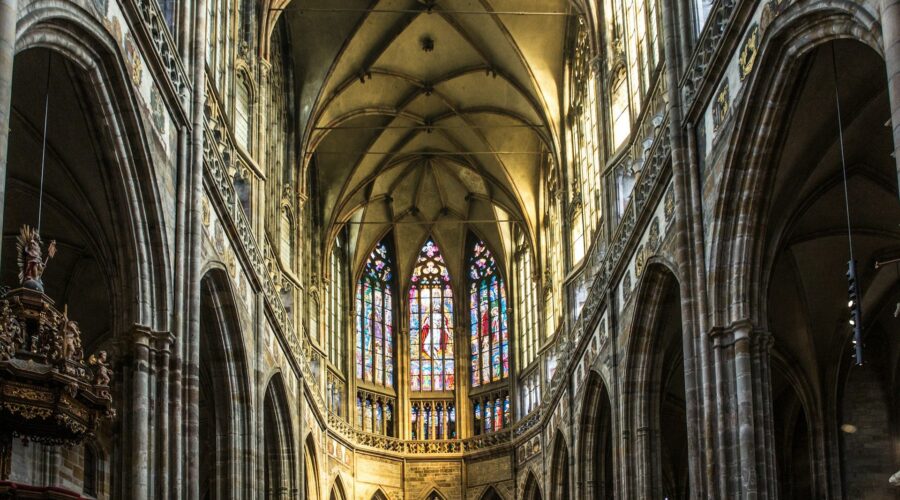
Meet Saint Paul the Apostle: A Pillar of Christianity
Introduction
Saint Paul, also known as the Apostle to the Gentiles, is one of the most influential figures in Christianity. His writings and teachings played a pivotal role in shaping the beliefs and practices of the early Church. In this comprehensive guide, we delve into the life, ministry, and legacy of Saint Paul, exploring his profound impact on the Christian faith.
Life and Early Ministry
Birth and Early Life
Paul was born as Saul in Tarsus, a Hellenistic city in Cilicia (modern-day Turkey), around 5-10 AD. He was a Roman citizen and received a Jewish upbringing under the tutelage of prominent rabbi Gamaliel in Jerusalem.
Conversion on the Road to Damascus
Around 33-36 AD, while on a mission to persecute Christians in Damascus, Saul experienced a transformative encounter with the resurrected Christ. The experience led to his conversion and subsequent change of name to Paul.
Missionary Journeys
After his conversion, Paul undertook three major missionary journeys, spreading the Gospel throughout the Roman Empire:
- First Journey (46-48 AD): Traveled to Cyprus, modern-day Turkey, and Greece, establishing churches in major cities.
- Second Journey (49-52 AD): Returned to Greece and visited Macedonia, establishing churches in Philippi, Thessalonica, and Corinth.
- Third Journey (54-58 AD): Traveled through Asia Minor and Greece, visited Jerusalem, and eventually reached Rome under arrest.
Teachings and Theology
Justification by Faith
One of Paul’s most significant teachings was that salvation is not earned through the observance of the Law but is received by faith in Jesus Christ. This revolutionary idea challenged traditional Jewish beliefs and sparked controversy within the early Church.
The Church as the Body of Christ
Paul also emphasized the unity of the Church as the Body of Christ. He believed that all believers, regardless of their background or status, are equal members of this spiritual community.
The Resurrection and the Second Coming
Paul taught that the resurrection of Jesus Christ was a central event in Christian faith. He also prophesied the Second Coming of Christ, when he would return and judge the world.
Impact on Christianity
Saint Paul’s influence on Christianity is profound:
- Spread of the Gospel: His missionary journeys spread the Christian faith throughout the Roman Empire, establishing churches and communities.
- Theological Development: His writings and teachings significantly shaped Christian doctrine and theology, particularly on justification by faith and the nature of the Church.
- Missionary Model: Paul’s model of ministry as an itinerant preacher and church planter became the blueprint for Christian missions in subsequent centuries.
Writings
Paul is traditionally credited with writing 13 letters, known as the Pauline Epistles, which are included in the New Testament of the Bible:
- Romans
- 1 Corinthians
- 2 Corinthians
- Galatians
- Ephesians
- Philippians
- Colossians
- 1 Thessalonians
- 2 Thessalonians
- 1 Timothy
- 2 Timothy
- Titus
- Philemon
Legacy
Saint Paul’s legacy continues to inspire and shape Christianity today. He is revered as a patron saint of missionaries, theologians, and those who strive to live a life of faith. His teachings on grace, salvation, and the nature of the Church remain central to Christian belief and practice.
Conclusion
Saint Paul the Apostle, a transformative figure in the history of Christianity, played a pivotal role in spreading the Gospel, shaping Christian theology, and establishing the Church. His teachings and legacy continue to guide and inspire believers, shaping the faith and lives of millions worldwide.

Discover the Rich History and Significance of St. Pius Church: A Comprehensive Guide
Introduction
St. Pius Church stands as a testament to the vibrant Catholic community in southeast Michigan. This historic landmark has served generations of worshippers and played a vital role in shaping the spiritual and cultural landscape of the region. Its rich history, stunning architecture, and diverse liturgical offerings have made it a beloved destination for both locals and visitors alike.
Historical Overview
Early Beginnings
The story of St. Pius Church begins in the early 20th century, when the Catholic population in the Harper Woods area began to grow rapidly. In 1923, a group of dedicated parishioners purchased land on Vernier Road and established a small mission church dedicated to St. Pius X, the newly canonized pope. The mission quickly outgrew its small building, and in 1927, construction began on a new and larger church.
The new church was designed in the Gothic Revival style, featuring pointed arched windows, vaulted ceilings, and a towering bell tower. It was completed in 1929 and dedicated by Cardinal Edward Mooney. Over the years, the church has undergone several renovations and additions to accommodate the growing needs of the parish.
Pastors and Parochial Life
St. Pius Church has been blessed with a succession of dedicated pastors who have guided the parish with wisdom and compassion. Among the most notable pastors was Father John McShane, who served from 1952 to 1984. Under Father McShane’s leadership, the parish grew significantly and became known for its vibrant parochial life, including a thriving school, youth programs, and social outreach initiatives.
Today, St. Pius Church continues to be a thriving parish under the leadership of Pastor Rev. Fr. Joseph Arockiam. The parish offers a wide range of ministries, programs, and events that cater to the needs of its diverse community.
Architectural Significance
St. Pius Church is not only a spiritual landmark but also an architectural masterpiece. Designed in the Gothic Revival style, the church features a number of striking features that set it apart from other churches in the region.
Exterior
- Pointed arched windows with stained glass depicting scenes from the life of Christ and the saints
- Vaulted ceilings with ribbed arches
- A towering bell tower with a cross-shaped finial
- Flying buttresses that support the walls and add to the building’s structural integrity
Interior
- A spacious nave with a high altar and a large crucifix
- Side aisles with stained glass windows and Stations of the Cross
- A choir loft overlooking the nave
- A baptistry with a large baptismal font
- A chapel dedicated to Our Lady of Lourdes
Liturgical Offerings
St. Pius Church offers a diverse range of liturgical offerings to meet the needs of its parishioners. From daily Mass to special celebrations, there is something for everyone to experience.
Mass Schedule
St. Pius Church offers daily Mass, as well as Mass on Saturdays and Sundays. The Mass times are as follows:
Day Time Monday – Friday 8:00 AM Saturday 5:00 PM Sunday 8:00 AM, 10:00 AM, 12:00 PM (Spanish Mass) Special Celebrations
Throughout the year, St. Pius Church celebrates a number of special events, including:
- Christmas Eve and Christmas Day Masses
- Ash Wednesday and Holy Week liturgies
- Easter Vigil and Easter Sunday Masses
- Pentecost Mass
- Feast of St. Pius X
- Parish festival
Community Outreach
St. Pius Church is committed to serving the needs of the wider community. Through its various outreach programs, the parish provides assistance to the poor, the sick, and the elderly.
- St. Vincent de Paul Society: Provides food, clothing, and financial assistance to needy families
- Soup Kitchen: Offers a free meal to the hungry every Saturday
- Nursing Home Visits: Ministers to the elderly and sick in local nursing homes
- Youth Ministry: Provides spiritual formation and service opportunities for youth
- Social Justice Committee: Advocates for the poor and marginalized
Visitor Information
St. Pius Church is open to visitors during regular hours. Guided tours are available upon request. The church is located at:
1401 Vernier Road
Harper Woods, MI 48225
For more information, please call the parish office at (313) 371-1323 or visit the church’s website at https://www.stp-hw.org.
Conclusion
St. Pius Church is a vibrant and historic landmark that has played a significant role in the spiritual, cultural, and social life of Harper Woods and the surrounding communities. Its beautiful architecture, diverse liturgical offerings, and commitment to social justice make it a destination that should not be missed.
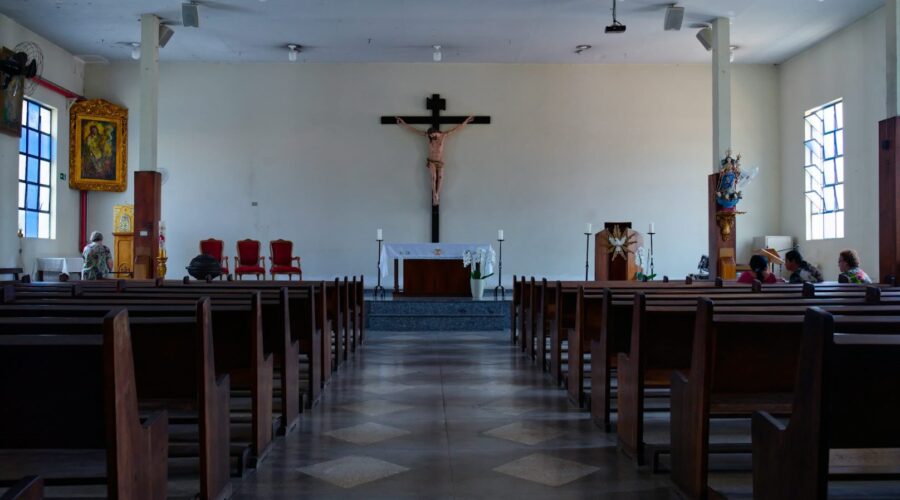
Discover the Rich History and Spiritual Significance of St. Anthony of Padua Catholic Church
Embark on a pilgrimage through time as we delve into the captivating story of St. Anthony of Padua Catholic Church. From its humble beginnings to its enduring legacy, this sacred edifice holds a special place in the hearts of Catholics worldwide.
Historical Roots
St. Anthony of Padua Catholic Church traces its roots back to the late 19th century, when a small group of Italian immigrants settled in the bustling city of Chicago. Yearning for a spiritual anchor in their new home, they established a small parish in the vibrant Little Italy neighborhood.
The First Church
In 1883, construction began on the first church building, a modest structure that served as a sanctuary for the growing congregation. Dedicated to St. Anthony of Padua, the beloved Franciscan friar known for his miraculous feats, the church quickly became a hub of religious and cultural life for the Italian community.
Growth and Expansion
As the parish flourished, the need for a larger and more opulent church became apparent. In 1914, plans were drawn up for an ambitious new edifice that would showcase the architectural grandeur and spiritual fervor of the congregation.
Architectural Marvel
The second St. Anthony of Padua Catholic Church, completed in 1921, is an architectural masterpiece that blends Italian Renaissance and Byzantine influences. Its soaring towers, intricate stained glass windows, and opulent interior create a breathtaking sanctuary for worship and contemplation.
Exterior Features
The church’s imposing facade is adorned with sculptures of saints and apostles, each representing a significant figure in Catholic history. Two grand towers flank the entrance, their graceful spires reaching towards the heavens.
Interior Splendor
Inside, the church unfolds into a symphony of colors and textures. The vast nave, lined with elaborate columns and arches, guides the eye towards the ornate altar. The walls are adorned with vibrant murals depicting biblical scenes and the lives of saints.
Devotional Significance
St. Anthony of Padua Catholic Church is not only an architectural marvel but also a profound spiritual center. Devotees from far and wide flock to the church to pay homage to St. Anthony, the patron saint of lost causes and miracles.
Miraculous Intercessions
Throughout history, countless miracles have been attributed to St. Anthony’s intercession. People who have lost cherished objects, experienced hardships, or faced impossible situations often find solace and hope in his sanctuary.
Prayer and Devotion
The church offers daily Mass, confession, and other sacraments, providing opportunities for spiritual growth and renewal. Pilgrims can visit the relic of St. Anthony, believed to be a fragment of his beard, and offer prayers for his intercession.
Community Outreach
St. Anthony of Padua Catholic Church extends its mission beyond its walls, actively serving the surrounding community. Through various outreach programs, the church provides support to the needy, fosters interfaith dialogue, and promotes education.
Social Services
The church operates a soup kitchen, food pantry, and clothing center, offering sustenance and assistance to those in need. It also provides counseling, support groups, and other services to address the challenges faced by the community.
Educational Opportunities
The church is home to a vibrant parish school, providing high-quality education to students from kindergarten through eighth grade. Its curriculum emphasizes Catholic values, academic excellence, and community involvement.
Visiting the Church
St. Anthony of Padua Catholic Church is a must-visit destination for pilgrims and tourists alike. Here are some tips for planning your visit:
- Location: 1133 N. Leavitt Street, Chicago, IL 60651
- Mass Times: Monday-Friday: 7:00 AM, 12:05 PM; Saturday: 8:30 AM, 4:00 PM, 6:00 PM; Sunday: 8:00 AM, 10:00 AM, 11:30 AM, 1:00 PM, 4:00 PM, 6:00 PM
- Contact Information: (773) 384-1297
- Website: https://stanthony-chicago.org
Conclusion
St. Anthony of Padua Catholic Church is a testament to the enduring power of faith, community, and architectural beauty. Its rich history, devotional significance, and community outreach make it a beacon of hope and inspiration for generations to come. Whether you visit for spiritual renewal, architectural appreciation, or a glimpse into Chicago’s rich tapestry, this sacred edifice will undoubtedly leave an unforgettable mark on your heart and soul.
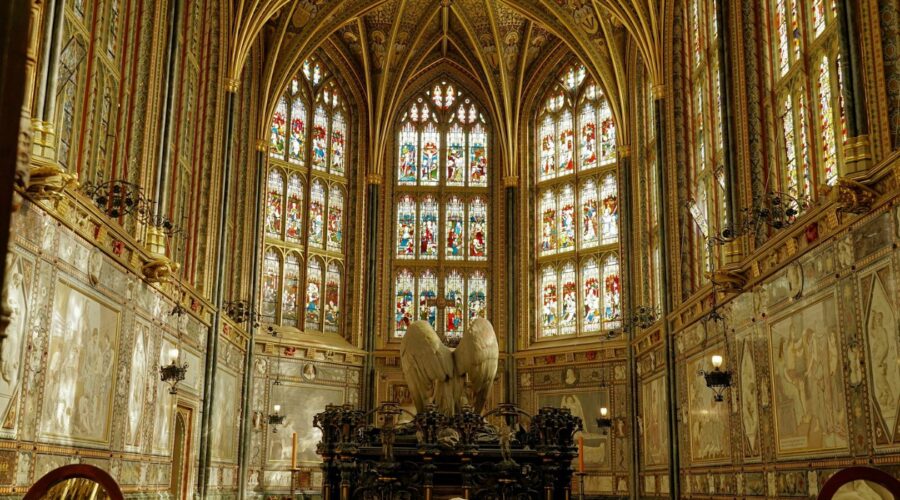
Saint Patrick Catholic Church: A Spiritual Haven in the Heart of the City
History and Heritage
Saint Patrick Catholic Church traces its origins back to 1833, when a small group of Irish immigrants established a congregation in the bustling city. Over the years, the church has played a pivotal role in shaping the spiritual landscape of the community, serving as a beacon of hope and a source of unwavering faith.
In 1868, the cornerstone of the current church building was laid, marking a significant milestone in the parish’s history. Designed in the intricate Gothic Revival style, the building is a testament to the architectural brilliance of the era. Its soaring spires and elaborate stained glass windows captivate the senses, creating a awe-inspiring atmosphere.
Parish Community
Saint Patrick Catholic Church fosters a vibrant and diverse parish community, where individuals from all walks of life are welcomed with open arms. The parish offers a wide range of ministries and programs that cater to the spiritual, social, and educational needs of its members.
Ministries
- Altar servers
- Lectors
- Ushers
- Eucharistic ministers
- Choir
- Finance committee
Programs
- Religious education classes for children and adults
- Youth group programs
- Social justice initiatives
- Outreach programs for the homeless and needy
Mass Times and Sacraments
Saint Patrick Catholic Church offers multiple Mass times throughout the week, allowing parishioners to choose the service that best suits their schedule. The parish also celebrates the sacraments of Baptism, Reconciliation, Confirmation, Marriage, and Anointing of the Sick.
Mass Times Day Time Sunday 7:30 AM, 9:30 AM, 11:30 AM (English)
1:30 PM (Spanish)Monday-Friday 12:10 PM (English) Saturday 5:00 PM (English) Clergy and Staff
Saint Patrick Catholic Church is led by a dedicated team of priests, deacons, and lay staff who are committed to serving the spiritual needs of the parish community.
Clergy
- Pastor: Rev. John Doe
- Associate Pastor: Rev. Jane Doe
- Deacon: Deacon Michael Jones
Staff
- Director of Religious Education: Sarah Smith
- Youth Minister: David Brown
- Organist: Mary Johnson
Location and Contact Information
Saint Patrick Catholic Church is conveniently located in the heart of the city, at the intersection of Main Street and Oak Avenue.
Address: 123 Main Street
City: Anytown
State: CA
Zip Code: 12345
Phone: (123) 456-7890
Email: [email protected]
Website: www.stpatricks.orgConclusion
Saint Patrick Catholic Church is more than just a building; it is a thriving and vibrant community that has been a beacon of hope and faith for generations. With its rich history, diverse parish community, and dedicated clergy and staff, Saint Patrick’s continues to serve as a spiritual haven in the heart of the city.
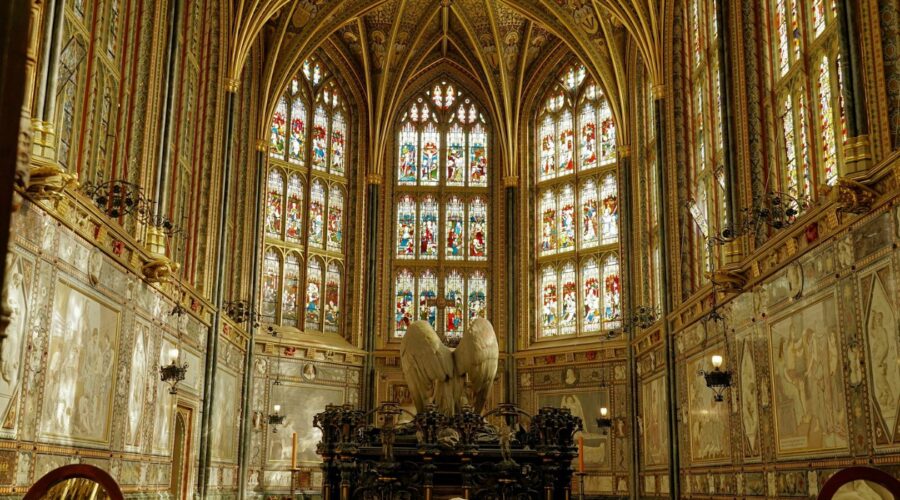
Unveiling the History and Mission of the First Church of the Nazarene
Foundation and History: A Journey Through Time
The First Church of the Nazarene holds a cherished place in the fabric of the Christian faith. Its genesis can be traced back to a humble meeting in Eureka, California, in 1895. A group of devout individuals, led by Dr. Phineas F. Bresee, united in their shared vision of establishing a church that embraced holiness and apostolic principles.
Over the ensuing decades, the church grew steadily, spreading its wings to various parts of the United States. In 1908, it officially adopted the name “First Church of the Nazarene.” This name signifies its position as the inaugural congregation of the Church of the Nazarene denomination, which was formally established in 1898.
Core Beliefs: Unwavering Pillars of Faith
- Holiness: A Path to Spiritual Transformation
Holiness stands as a central tenet of the First Church of the Nazarene’s doctrine. It is not merely an abstract concept but a practical pursuit, calling believers to live a sanctified life, aligning themselves with God’s character and commands.
- Evangelism: Sharing the Gospel’s Transformative Power
The church places great emphasis on evangelism, driven by the conviction that all individuals deserve an opportunity to encounter the transforming grace of Jesus Christ. Outreach efforts extend beyond the local community, reaching across geographic and cultural boundaries.
- Discipleship: Nurturing Spiritual Growth
Discipleship is an integral aspect of the church’s mission. It encompasses a commitment to nurturing spiritual growth in members, guiding them toward a deeper understanding of God’s Word and enabling them to live out their faith authentically.
Mission and Outreach: Extending God’s Love
- Local Ministries: Serving the Community with Compassion
The church actively engages in serving the local community, addressing needs through various ministries. These initiatives range from food pantries and homeless outreach to after-school programs for children and youth.
- Global Outreach: Extending God’s Kingdom Worldwide
The mission of the First Church of the Nazarene extends far beyond its local sphere. It supports numerous global outreach initiatives, partnering with organizations worldwide to provide humanitarian aid, healthcare, education, and spiritual nourishment.
Church Structure and Leadership: A Framework for Order
- Pastoral Leadership: Providing Spiritual Guidance
The church is led by a senior pastor, who is responsible for providing spiritual oversight, preaching, and guiding the congregation. Associate pastors support the senior pastor in various ministries and administrative tasks.
- Board of Elders: A Team of Spiritual Oversight
The Board of Elders serves as the church’s governing body, providing spiritual guidance and support to the pastors. Elders are elected by the congregation and represent the diverse perspectives and needs of the church.
Conclusion: A Beacon of Faith and Service
The First Church of the Nazarene has stood as a beacon of faith and service for over a century. Its unwavering commitment to holiness, evangelism, and discipleship continues to inspire countless individuals. Through local and global outreach programs, the church extends God’s love and grace, making a tangible difference in the lives of many.
Whether you are seeking a spiritual home or simply curious about the Christian faith, the First Church of the Nazarene welcomes you with open arms. May its rich history and ongoing mission serve as a source of inspiration and encouragement on your own spiritual journey.

Greg Locke: A Deeper Dive into the Controversial Pastor
Introduction
Greg Locke is a pastor and a well-known figure in the Christian community, particularly within Pentecostal circles. His sermons and social media presence have garnered significant attention, both positive and negative. This blog post will explore Greg Locke’s life, beliefs, controversies, and impact.
Early Life and Ministry
Humble Beginnings
Gregory Allen Locke was born on January 21, 1969, in Mount Juliet, Tennessee. His early life was marked by financial struggles and his father’s alcoholism. At the age of 15, he got involved in drugs and alcohol.
Conversion and Calling
Locke claims to have experienced a dramatic conversion in 1987. He enrolled in the Global University of Tennessee to study theology and received his ordination in 1992. He founded his first church, “Global Vision Bible Church,” in Lebanon, Tennessee, in 1993.
Global Vision Bible Church
Growth and Popularity
Under Locke’s leadership, Global Vision Bible Church grew rapidly. He became known for his charismatic preaching style, often involving passionate denunciations of sin and appeals for salvation. The church gained a significant following both in person and online.
Controversial Teachings
Locke’s sermons have often courted controversy. He has made statements that have been criticized as homophobic, Islamophobic, and anti-science. He has been accused of promoting conspiracy theories and spreading misinformation.
Political Involvement
Support for Trump
Locke is a vocal supporter of former U.S. President Donald Trump. He participated in the “Stop the Steal” rallies following the 2020 presidential election and promoted baseless claims of election fraud.
COVID-19 Pandemic
Locke frequently defied COVID-19 restrictions and public health recommendations. He held large indoor gatherings without requiring masks or social distancing, leading to public health concerns.
Controversies and Scandals
Public Confrontations
Locke has been involved in several public confrontations. In 2020, he was arrested for trespassing after confronting a healthcare worker at a COVID-19 testing site. He has also been sued for assault and battery.
Financial Mismanagement
Locke has faced allegations of financial mismanagement. He has been accused of using church funds for personal expenses and failing to provide sufficient financial transparency.
Impact and Legacy
Growth of Pentecostalism
Locke’s ministry has contributed to the growth of Pentecostalism in the United States. His flamboyant preaching style and confrontational approach have resonated with many who feel disenfranchised or marginalized by other religious traditions.
Influence on Politics
Locke’s support for Trump and his involvement in political issues have raised concerns about the influence of religious leaders in politics. His actions and statements have polarized opinions both within and outside the Christian community.
Division and Polarization
Locke’s controversial teachings and public actions have led to division and polarization within the Christian community. Some view him as a fearless voice for truth, while others criticize his inflammatory rhetoric and disregard for basic Christian principles.
Conclusion
Greg Locke is a complex and controversial figure. His charismatic preaching, provocative statements, and political activism have garnered both support and condemnation. While he has undoubtedly had an impact on the Christian community, his legacy remains polarizing. It is up to each individual to decide whether they embrace or reject Locke’s message and actions.